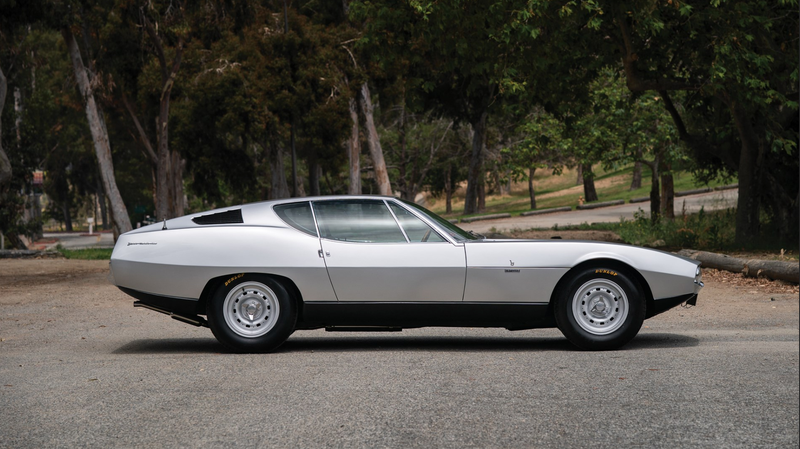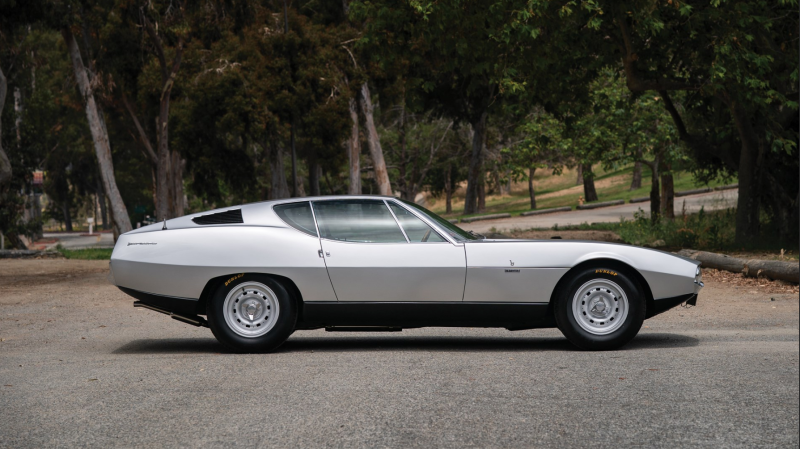
Times are not good at Jaguar. Sales are down. China is not the market that the bosses at Tata thought it would be, and the brand’s star designer is out after 20 years. But there is hope, and it comes from Italy.
The past few decades have been easy for Jaguar when it comes to design. When the brand wanted a new car, someone in management probably walked over to Ian Callum, the brand’s head of design, and said “Ian, we want a new car.” The result of those simple conversations weren’t just new cars, they were icons. Callum’s XK, XJ, and F-Type totally redefined what a production Jaguar could look like and launched a new era for the brand.
Still, between the gems, Callum’s later tenure at Jaguar was marred by a pivot to crossovers like the F-Pace and E-Pace. These designs took the details Callum had honed for sedans and sports cars and applied them to the models the executives thought could bring Jaguar sales to the next level. The result was not quite the success that the bosses at Tata were expecting, and so I think it’s time for a new approach, even though it ultimately is rooted in something Jaguar has done for decades. They should find someone else to design the cars. No not the insides, the outsides.
Back in the day, Jaguar would flirt with the big design houses in Italy. The cars produced are some of my favorite one-offs and concepts. Though none of the designs they supplied for the English firm made it to series production, the results of these flirtations by and large remain incredible examples of Anglo-Italian cooperation.
Advertisement
Let’s take a look at a few of these cars. When we’re done, I’m pretty sure you’ll agree that Jaguar ought to take a page from the brand’s own history and commission some more cars from Pininfarina, Zagato, Bertone and the rest.
Advertisement
Going in chronological order, a good place to start is the Zagato XK140 from 1957. Though not quite a one-off (two more similar cars were built on XK150 chassis), the Zagato XK140 was every bit the extravagant show car you might expect from Jaguar and the alchemists of aluminum at Zagato. I suppose this car might not be everyone’s cup of tea, with its pinched front end, but I’m a big fan of Zagato’s work, and I think we can all agree that the XK140 Zagato represents a really daring attempt to drape Italian lines around a British shape.
The Italian coachbuilt Jaguars really came into their own a few decades later during the late ‘60s and into ‘70s. Marcelo Gandini, whose upright FT built 1966 for Jaguar’s Italian importer was attractive in my eyes but perhaps not everyone’s cup of tea, got another chance in 1967 when he designed the Pirana. The Pirana was unveiled at the 1967 Earl’s Court Motor Show in London, the mechanicals of an E-Type 2+2 Coupe wrapped in Gandini’s iconic angles and sweeps.
Advertisement

The E-type’s famous long hood still juts out in front of the driver, visually lengthened by a crease along the side of the car and sweeps up towards the back. The wide haunches of the E-Type also remain, but instead of a rounded side-opening hatch, the Pirana ends with a chopped and louvered kamm-back that anticipates Gandini’s later masterpiece, the Maserati Khamsin.
Advertisement

Aside from its gorgeous design, the Pirana is notable for its inception too. Unlike other one-offs, this car was conceived by motoring journalists at the Daily Telegraph to exemplify the ‘60s London zeitgeist. Perhaps it’s just class loyalty, but I think they nailed it. Others agree, as the car sold a few weeks ago at Monterey for $324,000. If that’s too steep for you, most of the design got recycled by Gandini into the Lamborghini Espada.
Advertisement
Not to be otutdone, the mighty Pininfarina has also given us a number of impressive Jaguar one-offs. Its 1978 XJ Spider was an attempt by Jaguar to find an E-Type successor when the V12-powered XJ-S had grown too large and luxurious to be the sports car Jaguar wanted.
Advertisement
Powered by the same V12, the XJ Spider was built on the basis of a development mule for the XJ-S. A convertible when the T-top XJ-S was still a few years away, the Spider was a true two-seater with a digital dashboard and the all-important pop-up headlamps. Shown at Birmingham in 1978, the car never made it to production and the brand was without a two-seat front-engined sports car until the F-Type was released in 2012.

Advertisement
Pininfarina also attempted to give Jaguar something to work with at the top end of the lineup too with a concept that preceded the XJ140, the Jaguar XJ40PF. This design was a departure from the sculpted shapes that Jaguar sedans had come to be known for, kind of like Callum’s XJ in 2010. Though Callum’s design did manage to break the Jaguar mold, Pininfarina couldn’t crack it and the design was put away in favor of something a little more traditional.

Advertisement
Giugiaro’s attempt to break into Jaguar’s design process with another sedan didn’t make it either. The 1990 Italdesign Jaguar Kensington smoothed out the more upright classic Jaguar sedan shape but ultimately didn’t make the splash needed to put it into production. Daewoo did end up using some of the design for its 1997 Leganza though.

Advertisement
Interestingly, one of my favorite Italian-designed Jaguar proposals took the opposite tack, bringing back more traditional shapes when jaguar had largely abandoned them. Proposed as a # Series fighter before Callum ‘s XE was ultimately selected, the Bertone B99 imagined a Jaguar sedan that was simultaneously forward-facing but also respectful of what made Jaguar a respectable and elegant choice as well. We were all excited for it and though it never made production, I’d still count it as one of the brand’s best shapes ever.
Advertisement
Each time, Jaguar decided against bringing Italian designs into their production line, and it may be that they made the right choices most of the time. Still, Jaguar has not sold as many XEs as they had hoped. I don’t know if the B99 would have been the answer. The small premium sedan market remains competitive and Jaguar has never had a real contender in the segment (no, the X-Type does not count).
I think that Jaguar has an opportunity to challenge expectations right now, and an Italian shape could fit the bill. The brand is banking on the success of the next XJ, which will be an EV. Callum was able to take Jaguars first EV, the I-Pace, and imagine a vehicle that defies segment categorization to make the most of electric power’s packaging advantages. The car hasn’t sold terribly well, but maybe if the next one doesn’t just challenge conventional wisdom for what a car can be but what a Jaguar could look like it can breathe some life into the brand that will desperately be needed as the British auto industry stares Brexit down. I certainly hope so.
















